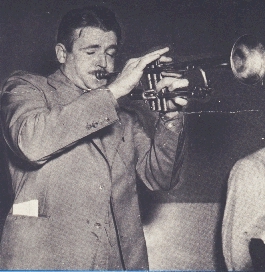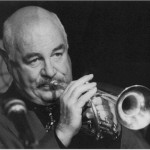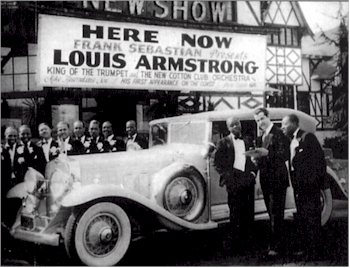They called Bunny Berigan the "Miracle Man of Swing." He was a young man from Wisconsin with a shock of wavy blond hair and a powerful three-octave range on the trumpet. He had the same big, wide-open trumpet sound whether he was playing the lowest note on his horn or way up in the high register. He was a fearless and daring improviser and a star soloist with the Benny Goodman and Tommy Dorsey orchestras before leading his own big swing band.
This week on Riverwalk Jazz Australian cornetist Bob Barnard joins The Jim Cullum Jazz Band to pay tribute to the music of Bunny Berigan, Jimmy Dorsey, Louis Armstrong and other giants of Swing.
An interviewer once asked Bunny Berigan what advice he would give a young musician going out on the road for the first time. Bunny shot back, "I'd tell him to take along his toothbrush and a photo of Louis Armstrong."
Like every other musician who came of age in the 1920s Bunny Berigan was deeply affected by the music of Louis Armstrong. In Berigan's case, Louis returned the compliment. Armstrong said, "I've always admired Bunny for his tone, his soul, his technique and his sense of phrasing....To me, Bunny can do no wrong in music."
Berigan's biggest hit was "I Can't Get Started." Jazz critic Whitney Balliet called it a "miniature trumpet concerto."
Unfortunately, like other tragic heroes of jazz Berigan died horribly young. He was 33 and alcohol was his nemesis.
Jimmy Dorsey was the older of the two Dorsey brothers. He was a musical prodigy who began his musical career at the age of seven playing the slide trumpet and cornet with his father's brass band at local parties. His father was a working class man who wanted a better life for his children and made them study music diligently. By the time he was 17 Jimmy was playing with the Jean Goldkette band with Bix Beiderbecke and Frankie Trumbauer.
During the 1920s the Goldkette Orchestra broke up and Jimmy, along with Bix and Trumbauer, joined the Paul Whiteman Orchestra. Jimmy left Whiteman and freelanced around New York playing with Red Nichols. In 1933 Jimmy and younger brother Tommy formed their famous Dorsey Brothers Orchestra which included drummer Ray McKinley, trombonist Glen Miller and singer Bob Crosby.
Jimmy Dorsey was widely admired for his virtuosity on the alto saxophone. He wrote "Oodles of Noodles" as a showcase for his breathtaking technical mastery. In our version JCJB clarinetist Ron Hockett successfully transfers this dazzling display to the more difficult clarinet. The slow middle section of this tune was later adapted as "Contrasts" and became the theme of the Jimmy Dorsey Orchestra.
By the time Swing grabbed hold and took over popular music in America, Louis Armstrong had been inventing and re-inventing jazz for almost twenty years. Though Armstrong led his own big bands through the 1930s and 40s, he was a comparatively minor figure in the landscape of Swing. But just beneath the surface, Louis' musical ideas—his phrases and figures and his approach to jazz informed and inspired all the music of the Swing Era.
Jim Cullum says, "Louis Armstrong is now acknowledged by all as the central figure in jazz in the 20th century. It's hard to imagine that in the Swing Era in the 30s and 40s he was more or less sidelined. He was still playing brilliantly, but the big pop stars of the day who were basically playing his stuff were white—famous band leaders like Glenn Miller, the Dorseys and Harry James. That was just the social situation that existed in the country. The Swing bands relied heavily on Armstrong's licks, which often were written out and harmonized for entire horn sections. Armstrong laid the groundwork for the Swing phenomenon but did not reap the reward until much, much later in his career."
Photo credit for Home Page: Bunny Berigan in 1936. Photo courtesy of Håkan Arlebrand.
Text based on Riverwalk Jazz script by Margaret Moos Pick ©2003





